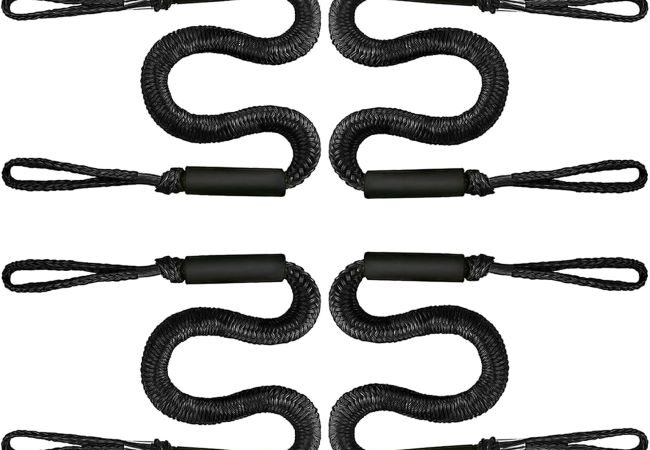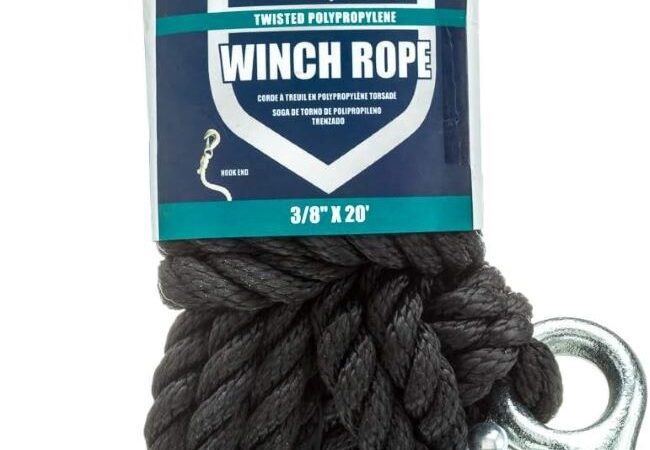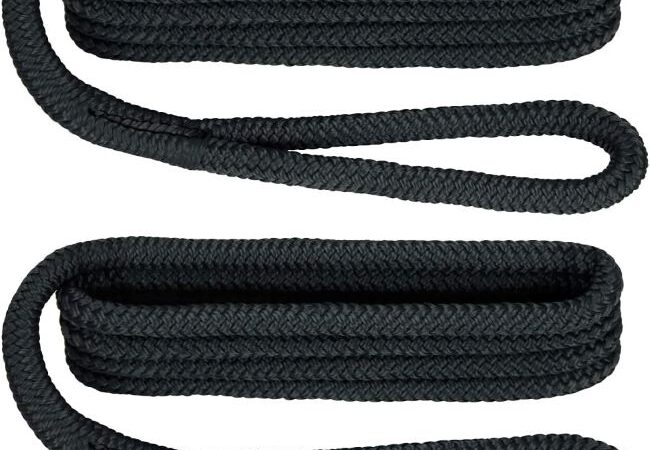
The Unsung Heroes of Tree Removal: Your Definitive Guide to Ropes, Strengths, and Safety
The majestic oak that has stood guard over your home for decades, or the unruly pine threatening your power lines – sometimes, even beloved trees need to be removed. It’s a task that demands precision, power, and, above all, safety. While chainsaws often steal the spotlight, the unsung heroes of safe and efficient tree removal are the ropes. These unassuming yet incredibly robust tools are the backbone of controlled felling, limb removal, and rigging operations.
Contents at a Glance
ToggleBut not all ropes are created equal. In the world of arboriculture, choosing the right rope is not just about pulling power; it’s about understanding material science, tensile strength, elasticity, and the intricate dance between these factors and the forces at play. This comprehensive guide will delve deep into the fascinating world of tree removal ropes, exploring the diverse types available, deciphering their strengths, and equipping you with essential safety tips to ensure your tree removal projects are successful and accident-free.
Beyond the Basics: Why Rope Choice Matters in Tree Removal
Imagine trying to stop a falling 500-pound limb with a simple clothesline. The absurdity highlights a critical point: the consequences of using the wrong rope for tree removal can be catastrophic. From personal injury and property damage to irreversible harm to the tree or surrounding landscape, an inadequate rope can turn a controlled operation into a dangerous disaster.
The right rope, on the other hand, provides:
- Controlled Descent: Allowing for precise lowering of limbs and sections, preventing uncontrolled falls.
- Directional Felling: Guiding the tree’s fall in a predetermined direction, avoiding obstacles.
- Load Management: Distributing weight and force efficiently, protecting both the tree and the equipment.
- Enhanced Safety: Reducing the risk of sudden snaps, slips, and other hazardous situations.
Understanding the nuances of different rope types and their applications is paramount for any arborist, tree service professional, or even a determined homeowner tackling a smaller, well-researched project.
The Arsenal of Arborists: Types of Tree Removal Ropes
Tree removal ropes are far more sophisticated than your average household cord. They are engineered for specific tasks, each with unique characteristics that make them suitable for different rigging scenarios. Let’s explore the most common and effective types:
-
Dynamic Climbing Ropes (Single, Half, and Twin Ropes)
While primarily associated with rock climbing, dynamic ropes have a limited but specific role in arboriculture, particularly for the climber’s personal safety line.
- Characteristics: These ropes are designed to stretch and absorb the energy of a fall. They are typically made from nylon.
- Strengths: Excellent for shock absorption, reducing the impact on the climber and anchor points during a fall.
- Limitations: Their elasticity makes them unsuitable for lifting or lowering heavy loads directly, as the bounce can be unpredictable and dangerous. They are not typically used as rigging ropes.
- Applications: Primarily used as a climbing line for the arborist, providing fall protection while ascending, descending, or positioning themselves in the tree.
-
Static Ropes (Low-Stretch Ropes)
In stark contrast to dynamic ropes, static ropes have minimal stretch, making them ideal for precise control and heavy lifting.
- Characteristics: Made from synthetic fibers like polyester or polyamide, they exhibit very little elongation under load.
- Strengths: Excellent for raising and lowering heavy loads, creating stable rigging systems, and precise directional control. Their low stretch means less bounce and more predictable movement of the load.
- Limitations: Less forgiving of sudden shock loads compared to dynamic ropes, as they don’t absorb energy as effectively.
- Applications: Widely used as rigging lines, pulling lines for directional felling, and as a stable work positioning line for arborists who need a rigid connection to the tree.
-
Braided Ropes (Double Braid, Kernmantle)
Braided ropes are a popular choice in arboriculture due to their durability and handling characteristics.
- Double Braid: Arborist’s Workhorse
- Characteristics: Consists of a braided core surrounded by a braided cover. Often made from polyester or blend of high-modulus polyethylene (HMPE) for enhanced strength.
- Strengths: Excellent strength-to-weight ratio, good abrasion resistance, easy to splice, and handle well. They are relatively low stretch.
- Limitations: Can be more expensive than some other types.
- Applications: Versatile and widely used for rigging, lowering, pulling, and general utility work in tree removal. They are often the go-to choice for their balance of strength and manageability.
- Kernmantle Ropes: The Core of Strength
- Characteristics: Features a core (kern) of parallel fibers providing strength, protected by a braided outer sheath (mantle) for abrasion resistance.
- Strengths: Extremely strong, durable, and resistant to abrasion. The mantle protects the load-bearing core from damage.
- Limitations: Can be stiffer and harder to knot than some other braided ropes.
- Applications: Often used for climbing lines, high-strength rigging applications, and situations where extreme durability is required.
-
Arborist-Specific Rigging Ropes
These ropes are purpose-built for the rigors of tree removal, often incorporating advanced materials and designs.
- Characteristics: May feature specialized coatings for enhanced abrasion resistance, unique core designs for high strength and low stretch, and often incorporate bright colors for visibility. Materials include polyester, Dyneema (HMPE), Technora, and Vectran.
- Strengths: Optimized for heavy loads, superior abrasion resistance against rough bark, excellent knot-holding ability, and often engineered for specific rigging techniques.
- Limitations: Can be significantly more expensive due to specialized materials and construction.
- Applications: Essential for heavy rigging, spar removal, and complex lowering operations where maximum strength and durability are paramount. Examples include various “rope for rigging” and “lowering ropes” specifically marketed to arborists.
Deciphering the Numbers: Rope Strengths and Load Ratings
Understanding rope strength is not merely about a single number; it’s about a combination of factors that dictate a rope’s ability to safely handle a load.
- Tensile Strength (Breaking Strength)
- Definition: The maximum force (in pounds or kilonewtons) a rope can withstand before it breaks. This is a static test performed under ideal laboratory conditions.
- Importance: Provides a baseline for the rope’s ultimate strength. However, it’s crucial to understand that real-world conditions significantly reduce this value.
- Working Load Limit (WLL)
- Definition: The maximum dynamic or static load that should be applied to a rope during normal use. The WLL is always significantly lower than the tensile strength, incorporating a safety factor.
- Importance: This is the critical number for practical tree removal. The WLL takes into account factors like knots, splices, wear and tear, and dynamic loading.
- Safety Factor: Typically ranges from 5:1 to 10:1 for tree removal ropes. This means the WLL is 1/5th to 1/10th of the rope’s tensile strength. A higher safety factor is always preferred, especially for dynamic or unpredictable loads. For instance, a rope with a 10,000 lb tensile strength and a 10:1 safety factor would have a WLL of 1,000 lbs.
Factors Affecting Rope Strength in Real-World Scenarios:
- Knots: Every knot reduces a rope’s strength. Some knots can reduce strength by as much as 50% or more. Learning strong, efficient knots that minimize strength loss is vital.
- Abrasion: Friction against rough bark, sharp edges, or other equipment can significantly weaken a rope over time, leading to premature failure. Using rope protectors or “cambium savers” is essential.
- Shock Loading: Sudden, uncontrolled forces (e.g., a falling limb hitting the rope with a jolt) can momentarily exceed the rope’s WLL, even if the static weight of the limb is within limits.
- Environmental Factors: UV exposure, extreme temperatures, and chemical contamination can degrade rope fibers, reducing strength.
- Wear and Tear: Repeated use, nicks, cuts, and fraying all diminish a rope’s integrity. Regular inspection is non-negotiable.
Safety First: Indispensable Tips for Using Tree Removal Ropes
Even the strongest ropes are only as safe as the practices employed. Adhering to strict safety protocols is paramount to preventing accidents and ensuring a successful tree removal.
-
Rigorous Pre-Use Inspection: Your First Line of Defense
Before every single use, thoroughly inspect your ropes. Look for:
- Cuts, nicks, or abrasions: Even small damages can compromise strength.
- Fraying or fuzzy spots: Indicative of internal damage or excessive wear.
- Discoloration or stiff spots: Can signal chemical exposure or heat damage.
- Uneven diameter: May indicate core damage.
- Melting or glazing: Signs of excessive friction or heat.
If a rope shows any significant signs of damage, retire it immediately. It’s better to replace a rope than to risk a catastrophic failure.
-
Understanding and Applying Working Load Limits (WLL)
Never, ever exceed a rope’s WLL. Always err on the side of caution. When calculating the load, factor in:
- Weight of the limb/section: Estimate conservatively.
- Dynamic forces: Account for the shock load generated by a falling object. This is often the most overlooked factor.
- Mechanical advantage systems: While they reduce the force required, they don’t change the WLL of the rope itself.
-
Proper Knot Tying and Rigging Techniques
- Learn and practice essential knots: Bowline, figure-eight, double fisherman’s, Blake’s hitch, Prusik hitch, and various friction hitches are fundamental.
- Dress knots properly: Ensure they are neatly formed, tight, and cinched down to maximize their strength.
- Avoid over-tightening: This can damage rope fibers.
- Utilize proper rigging angles: Acute angles can multiply forces on ropes and anchor points. Strive for obtuse angles where possible.
- Employ redirects and mechanical advantage: Use blocks, pulleys, and friction devices to manage loads more effectively and reduce stress on the ropes and arborists.
-
Protecting Your Ropes: Extend Their Lifespan and Safety
- Use cambium savers or rope sleeves: These protect ropes from abrasive bark, sharp edges, and excessive friction, especially at natural crotches or around limbs.
- Avoid dragging ropes on the ground: Dirt, grit, and debris can embed in the fibers, causing internal abrasion.
- Protect from chemicals: Keep ropes away from gasoline, oil, acids, and other corrosive substances.
- Store properly: Keep ropes clean, dry, and out of direct sunlight in a well-ventilated area. Coil them neatly to prevent tangles and kinks.
- Effective Communication and Teamwork
Tree removal is a team effort. Clear communication among all crew members is vital to avoid misunderstandings and accidents, especially during complex rigging operations.
-
Continuous Training and Professional Development
The world of arboriculture is constantly evolving. Stay updated on the latest techniques, equipment, and safety standards through workshops, certifications, and industry publications. Knowledge is your most powerful safety tool.
Beyond the Rope: Complementary Tools for Safe Tree Removal
While ropes are central, they are part of a larger system. Other essential tools that work in conjunction with ropes for safe tree removal include:
- Pulleys and Blocks: Essential for mechanical advantage, redirecting ropes, and reducing friction.
- Friction Devices (e.g., Port-A-Wrap, Hobbs Device): Allow for controlled lowering of heavy limbs by creating friction on the rope.
- Carabiners and Snaphooks: Strong, secure connectors for attaching ropes to other equipment.
- Slings and Chokers: Used to secure loads to ropes or provide anchor points.
- Saws (Chainsaws, Hand Saws): For cutting, but always used in conjunction with safe rigging.
- Personal Protective Equipment (PPE): Helmets, eye protection, hearing protection, gloves, and chainsaw protective pants are non-negotiable.
Read More Also: Nylon vs. Polypropylene vs. Manila for Marine Applications
Conclusion: Mastering the Art of Safe Tree Removal
Tree removal is a challenging but rewarding endeavor that, when executed correctly, can significantly enhance the safety and aesthetics of your property. The humble rope, far from being just a piece of cordage, stands as a critical component in this complex process. By understanding the different types of ropes, their inherent strengths, and, most importantly, the indispensable safety practices associated with their use, you empower yourself to undertake tree removal projects with confidence and precision.
Remember, the goal is always a safe, efficient, and controlled outcome. Invest in quality ropes, educate yourself on proper techniques, commit to rigorous safety protocols, and never hesitate to seek professional assistance for larger or more complex removals. Your diligence in mastering the art of safe tree removal, with ropes as your trusted allies, will ensure that every cut, every descent, and every maneuver is a testament to both skill and safety.






